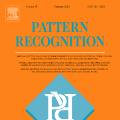Spectrograms visualize the frequency components of a given signal which may be an audio signal or even a time-series signal. Audio signals have higher sampling rate and high variability of frequency with time. Spectrograms can capture such variations well. But, vital signs which are time-series signals have less sampling frequency and low-frequency variability due to which, spectrograms fail to express variations and patterns. In this paper, we propose a novel solution to introduce frequency variability using frequency modulation on vital signs. Then we apply spectrograms on frequency modulated signals to capture the patterns. The proposed approach has been evaluated on 4 different medical datasets across both prediction and classification tasks. Significant results are found showing the efficacy of the approach for vital sign signals. The results from the proposed approach are promising with an accuracy of 91.55% and 91.67% in prediction and classification tasks respectively.
翻译:光谱仪可以直观地看到某一信号的频率组成部分,这些信号可能是音频信号,甚至是时间序列信号。音频信号的取样率较高,而且频率也随时间变化很大。光谱仪可以很好地捕捉到这些变化。但是,时间序列信号的生命信号的取样频率和低频变化较少,因此光谱仪无法显示变化和模式。在本文中,我们提出了一个新的解决方案,用对关键信号的频率调制来引入频率变化。然后,我们对频率调制信号应用光谱仪来捕捉模式。在预测和分类任务之间对4个不同的医疗数据集进行了评价。发现重要结果显示关键信号方法的有效性。拟议方法的结果很有希望,预测和分类任务的准确率分别为91.55%和91.67%。





